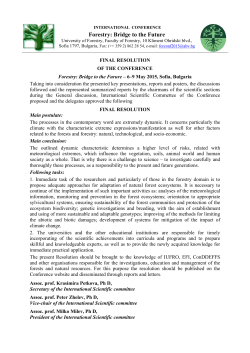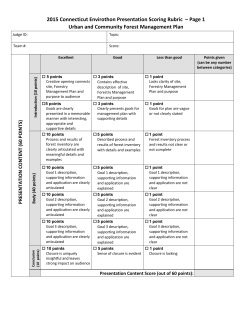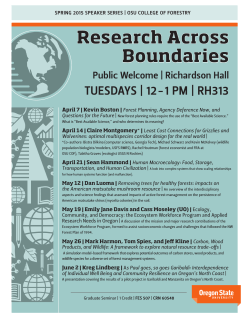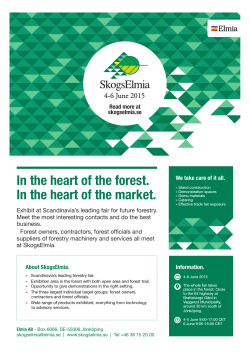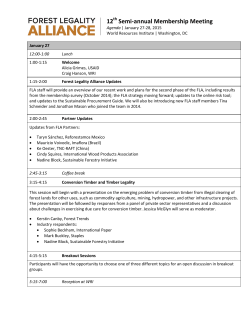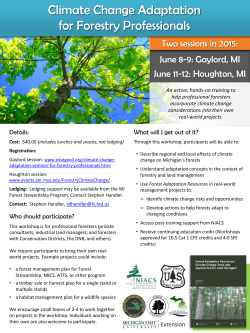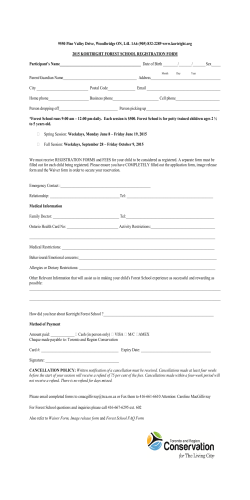
sweden`s forest industry and indirect climate impacts
Text: Olle Olsson In a globalized world, climate change impacts in one part of the world can have a strong effect in another part. This also applies to Sweden's forest industry. It is therefore essential to analyse what is going on in the world around us and include indirect climate impacts in risk analyses of how the forest industry is affected by climate change. Sweden's forest industry and indirect climate impacts Within the scope of Mistra-SWECIA, a framework is being developed for the systematic handling of indirect climate impacts. Four processes have been identified that transfer climate impacts from one place to another: > People (for example, migration caused by climate change) > Biophysical processes (climate impacts on the upper reach of a river may affect the entire river basin) > Trade (global trade flows with products for industries and consumers can be disrupted by e.g. flooding) > Financial flows (Swedish pension funds invest globally which means exposure to global climate change) If this framework is applied to the Swedish forestry sector, a number of interesting aspects can be seen. Sweden's forestry sector is very much a part of an international market and a large proportion of its production is exported. Moreover, Sweden's forest industry has increasingly established both production and sales operations in other parts of the world, which means increased exposure to climate impacts that are far removed from the industry's traditional heartland in northern Europe. People With a warmer climate, storm damage to forest is predicted to increase, mainly because less ground frost will result in poorer ground stability during the winter months. Spruce forest is particularly vulnerable for 18 such deterioration in ground stability. Indirect impacts related to flows of people can, for example, be linked to events after the Gudrun storm in 2005. The storm caused enormous damage to forests in southern Sweden but it also had indirect impacts since a lack of personnel and felling resources affected large parts of northern Europe, including regions that had not been very affected by the storm. When large volumes of stormdamaged forest in southern Sweden had to be processed within a short time so as to avoid further damage from insects and harmful fungi, so much skilled personnel and machinery was needed that there was a drop in felling operations in other parts of the Nordic region. Biophysical processes The risk of forest fires is expected to increase as a result of climate change because long dry periods, like the one that preceded last year's fire in Västmanland, will become more common. The forest fire in Västmanland during the late summer of 2014 illustrates an indirect impact that can be linked to a biophysical process. Here, the forestry sector was the source of an impact that affected other sectors and geographical areas located far from the actual fire. The biophysical process consisted of smoke. The forest fire itself had devastating effects on a large area, 15,000 - 20,000 hectares, but the smoke from the fire spread over a much larger area. Smoke from the fire was felt in both Stockholm and Oslo. In the relatively nearby town of Västerås, the air during the fire reminded of the air in the polluted city of Beijing. Mistra-Swecia Annual Report 2014 Sweden's forest industry and indirect climate impacts Trade Sweden's forestry sector is very much part of an international market, partly for its supply of timber but above all to sell its products. This means there are extremely complex supply chains which extend all round the world. These trade flows could be very exposed to external disruptions and this could happen in very different geographical locations. The effects of climate change can be both negative and positive. For example, Sweden's forestry industry imports substantial amounts of raw wood from countries around the Baltic Sea. In winter, frozen ports have constituted an obstacle. This is a problem that is expected to be alleviated by a warmer climate and this should benefit the Baltic Sea timber trade, something that can be regarded as a positive indirect impact of climate change. Financial flows There are institutional and judicial barriers that limit the international exposure of Sweden's forestry sector, Mistra-Swecia Annual Report 2014 not least the fact that it is difficult for legal persons to get an acquisition permit to purchase forest and agricultural estates. This means that, in essence, international investment in Swedish forests is done via investments in the listed Swedish forestry companies. However, these forestry companies are players on a global market for wood products and they are affected by climate-related market fluctuations in other parts of the world. A good example of this is the extensive damage caused by insects to pine forest in western Canada. There, milder winters have led to improved living conditions for the lodgepole pine bark beetle. This insect pest has destroyed more than 700 million cubic metres of forest in the western part of North America, which is the equivalent of about twenty per cent of Sweden's total timber stock. The damage to forests in Canada has had a significant effect on, for example, the Japanese wood product market, where Swedish forestry companies are in competition with Canadian players. k 19
© Copyright 2025

